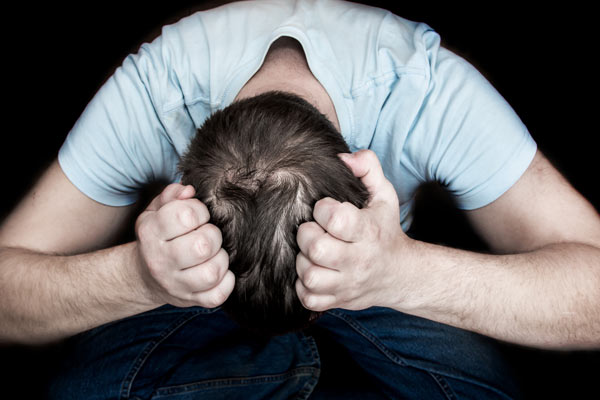
The opioid epidemic in the U.S. is in full swing. In 2016 there were more deaths from drug overdoses than any other year previously, and almost two-thirds of those deaths involved opioids. Every day, there are over 100 American lives claimed by opioid overdose. In 2016, there were approximately 13,500 deaths related to heroin use, and in the four years prior, heroin-related deaths more than tripled.
What can be done about this epidemic that is sweeping across the country, affecting every demographic including all socioeconomic backgrounds? Some think that increasing access to the drug naloxone is necessary to combat the ever-rising wave of opioid overdoses.
What Is Naloxone?
Naloxone (Narcan) is an opiate antidote. Opioids are a class of drug that includes both illegal and legal prescription drugs. Heroin and many prescription painkillers are all considered opiates. If a person is overdosing on an opioid, their breathing will slow way down, and it is very hard to arouse them from unconsciousness. Naloxone is a medication that blocks the effects of opioids and can reverse an opioid overdose.
Naloxone is not a controlled substance, and cannot be used to get high. In fact, if it is given to a person who has not had any opioids, it will have no effect on them.
How Does Naloxone Work?
If a person has opioids in their system and is given naloxone, the opioids are struck out of the brain receptors. This antidote can work even if the person has taken opioids along with other drugs or alcohol. Once a dose is administered, the person’s breathing should begin to return to normal, and they will be reusable. Because brain damage can occur within just a few minutes of an overdose due to lack of oxygen, it is crucial that the person is given naloxone as soon as possible when overdosing. It can potentially save lives if given quickly, giving the person extra time until first responders arrive.
Naloxone is administered by intramuscular injection – in the larger muscles of the arm, thigh, or buttocks – or, more recently, by a nasal spray. Injection is the most common, but more and more U.S. cities are beginning to use the nasal spray as well. The medication typically works within the first five minutes, however, an additional dose may be needed if the person is still showing signs of overdose. About 30 minutes after the administration of naloxone, it begins to wear off and is mostly out of the patient’s system within 90 minutes. This gives the body enough time to process the opioid to the point where the patient isn’t as likely to stop breathing again.
Using naloxone will cause a person to immediately go into opioid withdrawal, which is often extremely uncomfortable, and should be monitored by medical professionals.
What Are Naloxone Access Laws?
For many years, only emergency medical professionals (emergency medical technicians (EMT’s) and emergency room doctors and nurses) had access to naloxone. Naloxone Access Laws changed that, making it legal for anyone to have the antidote in their possession and providing legal civil and criminal amnesty for any unintended consequences when someone administers naloxone in good faith. Because naloxone has no street value and is nearly 100% harmless to healthy people, it would seem that Naloxone Access Laws would be widely accepted and enacted.
Before Naloxone Access Laws started to be enacted (only some states currently have them), some harm reduction groups circulated naloxone in at-risk areas even though it was illegal. Their common belief was that it is necessary to resort to illegal means if it was to save lives.
Should Naloxone Be Made More Available?
At first glance, increased access to naloxone seems only positive. After all, it can reverse the effects of opioid overdose quickly, it has no risks of addiction itself, and it is not dangerous if used on someone who has not ingested heroin or other opioid medications. It is undoubtedly one of the strongest tools for fighting overdose.
Even with that said, there are some concerns that have arisen regarding making naloxone access more relaxed. One of the biggest concerns is that non-medical personnel don’t have the necessary training to administer it properly. Naloxone induces immediate opioid withdrawal, and that can include serious side effects such as tachycardia (increased heart rate), vomiting, hypertension, and even hallucinations. It is thought that these side effects could be harmful to both the addict and any bystanders. Additionally, if it is given in a non-medical setting, it could lead to further complications.
Another concern shared by some medical professional and public safety officials is that the increased access and availability of naloxone may provide drug users with a false sense of security, leading to increasing opioid use and abuse and fewer people seeking treatment for opioid addiction. Despite the positive effects of naloxone – that it greatly increases chances of survival in the event of overdose – it isn’t completely foolproof. Opioid use is extremely dangerous and should not be underestimated.
Final Thoughts
Increased education about naloxone is needed. If it is to become more widely accessible, friends and family of those at risk of opioid overdose need proper training on how to administer it and the possible side effects. Users need to understand that it is not 100% guaranteed that they will be unscathed from an overdose just because they receive naloxone (Narcan). It must be seen as a last-resort means to save lives, and not as something that enables further opioid abuse.
If you or a loved one is addicted to opioid drugs, your best course of action is to seek treatment for the addiction. Naloxone should not be a loophole that removes the necessity of proper treatment. If you or your loved one needs help, please contact Serenity at Summit. We can assist you with medical detox and addiction treatment.

